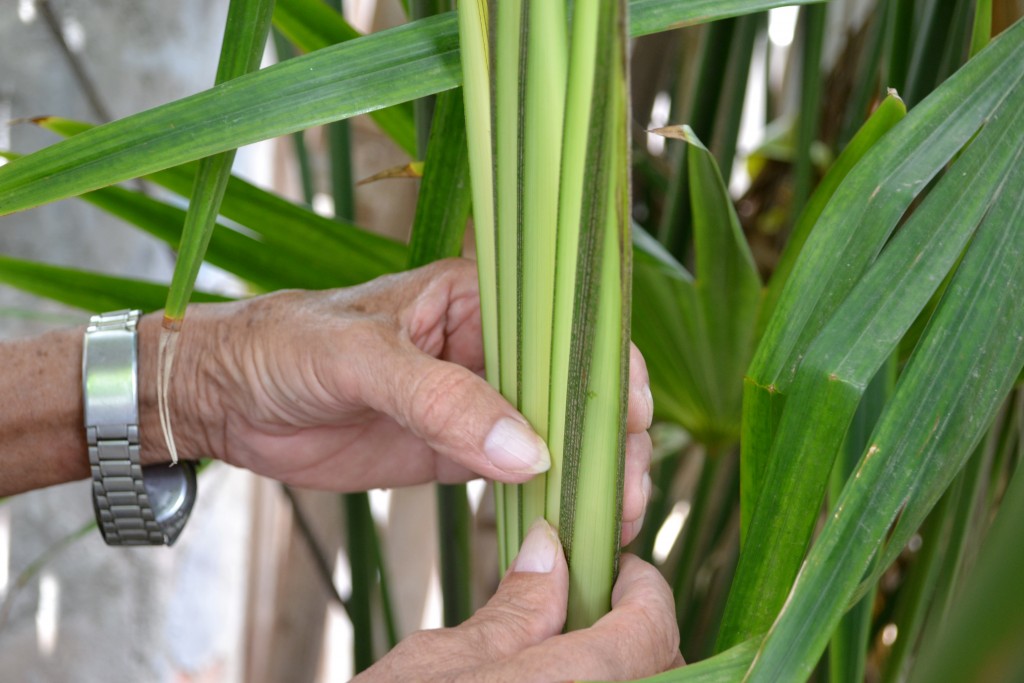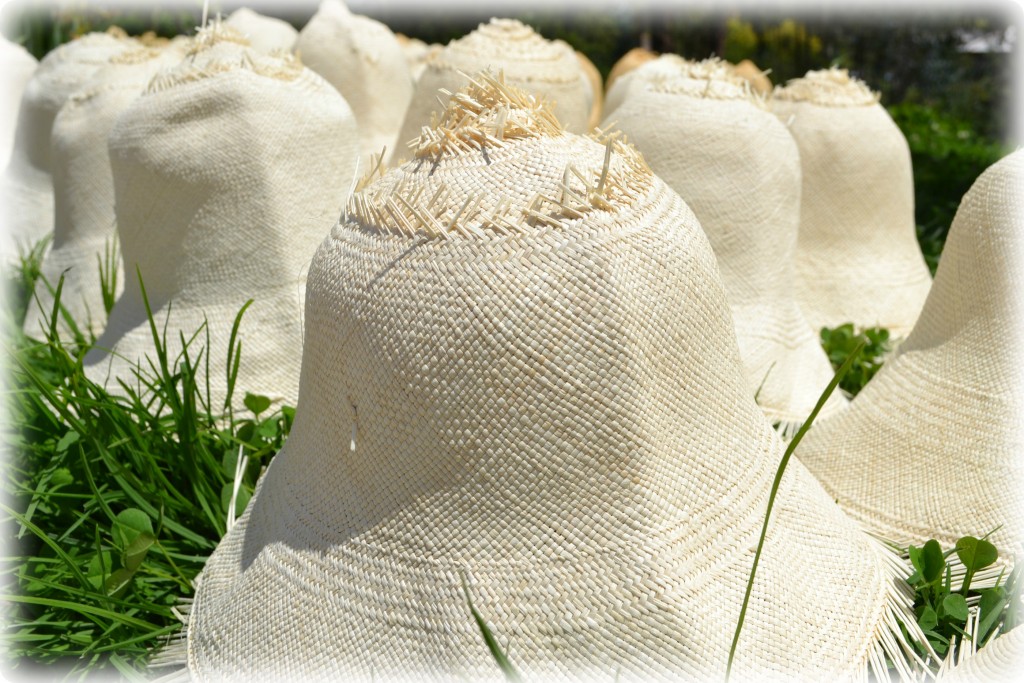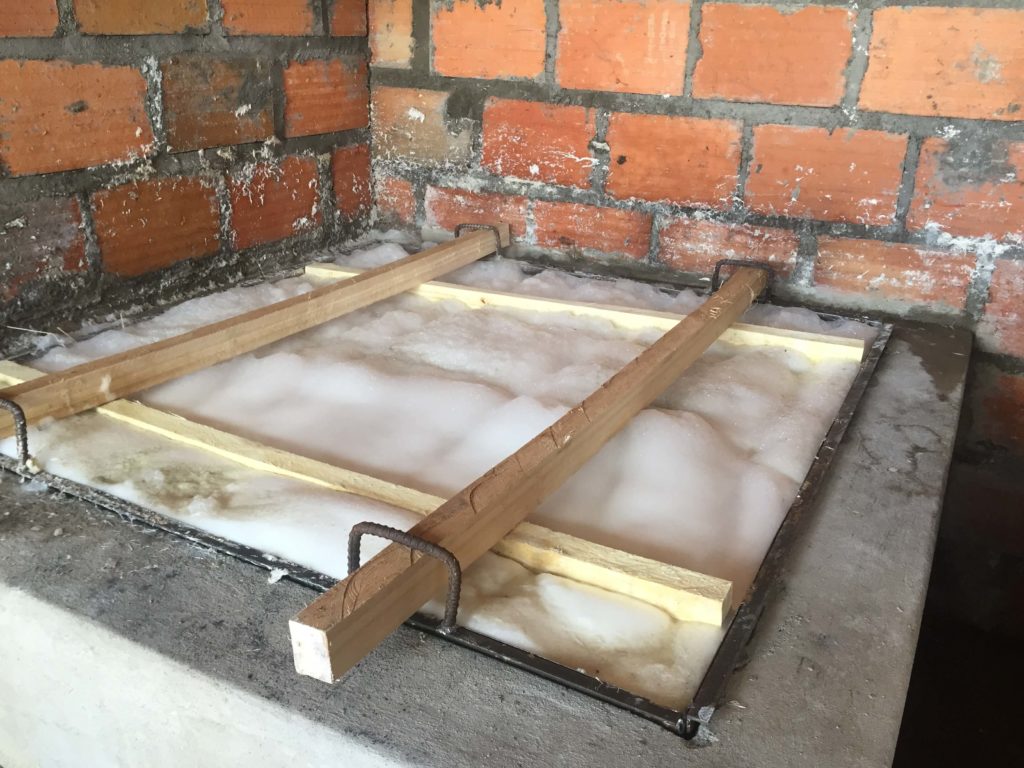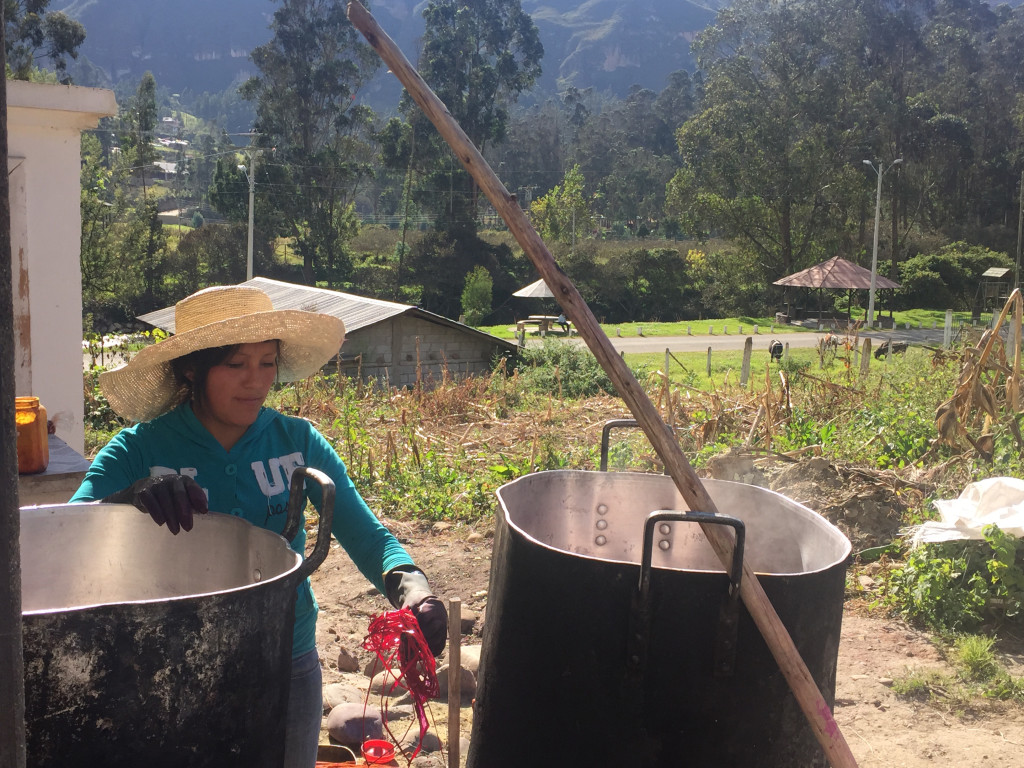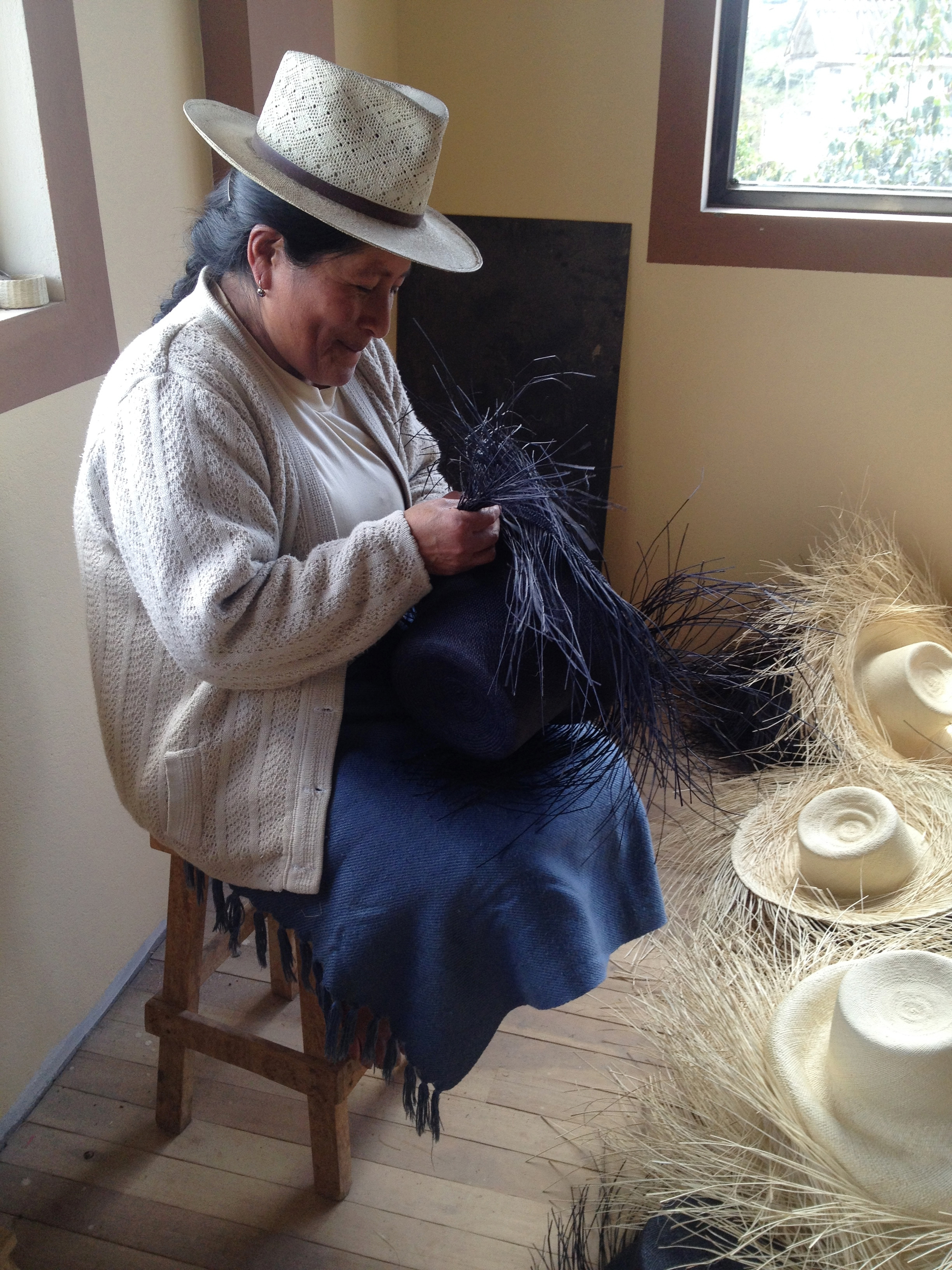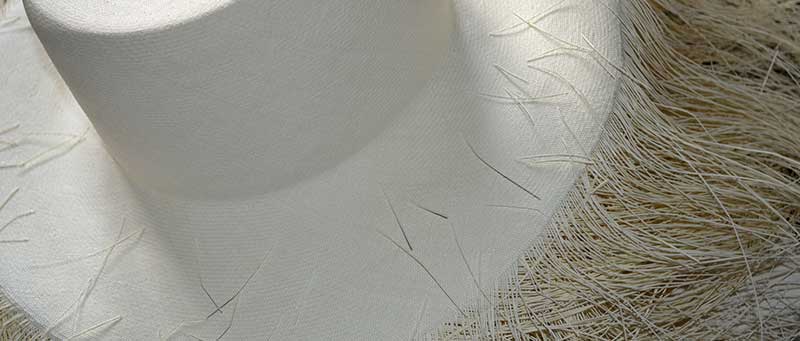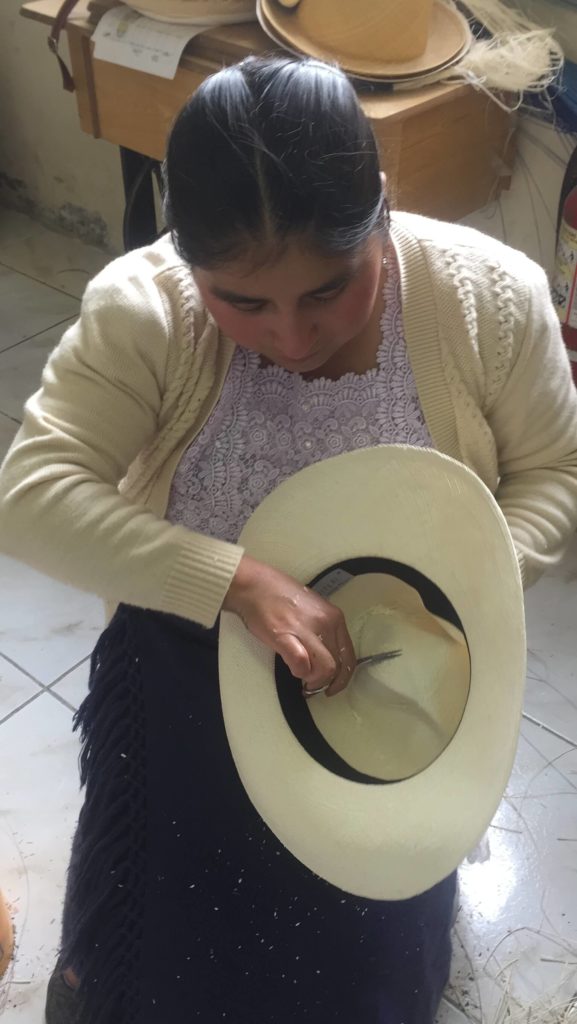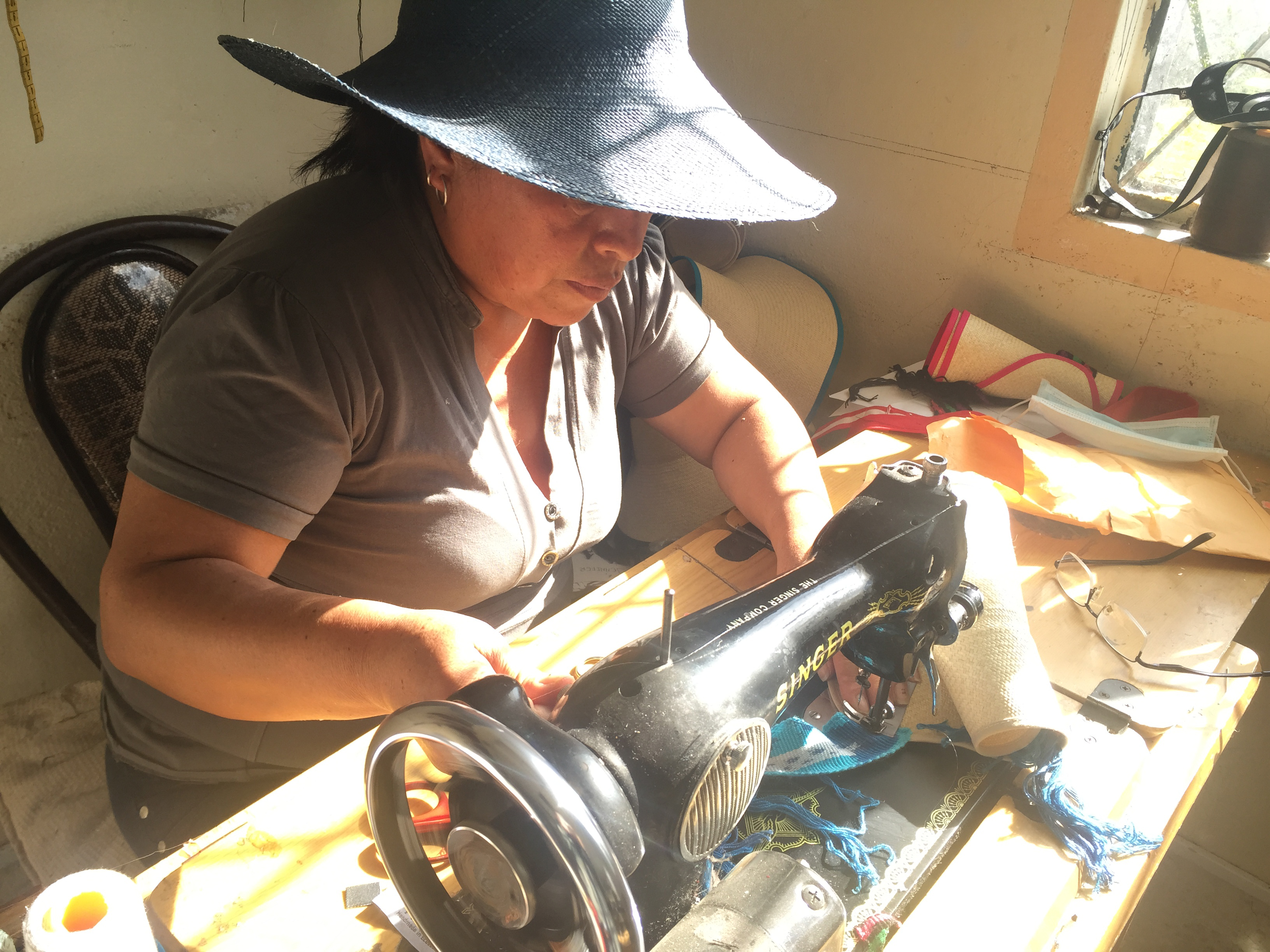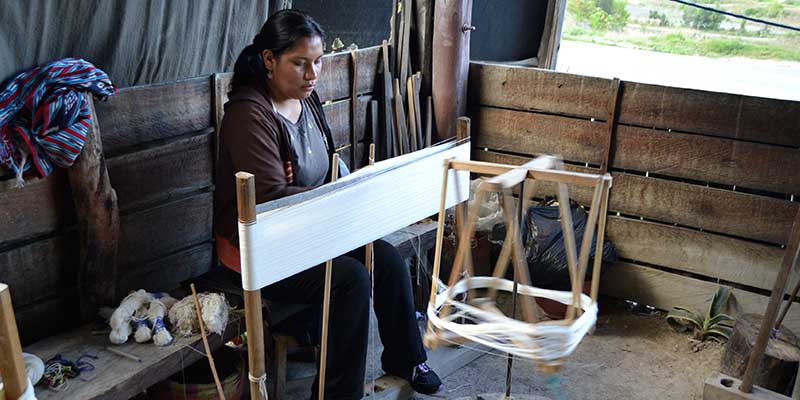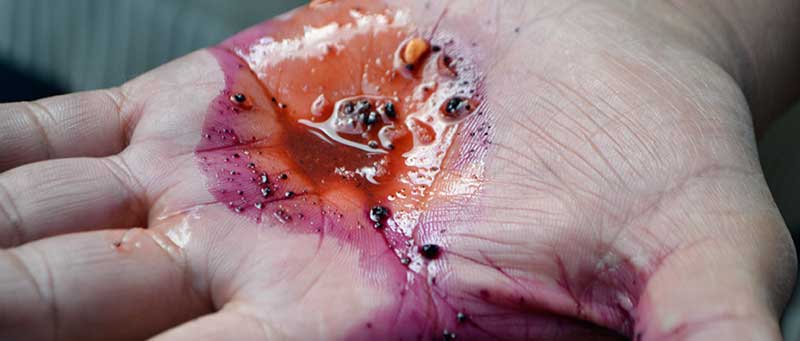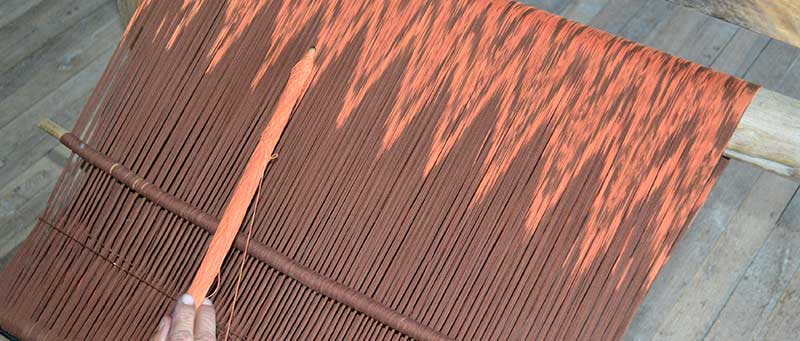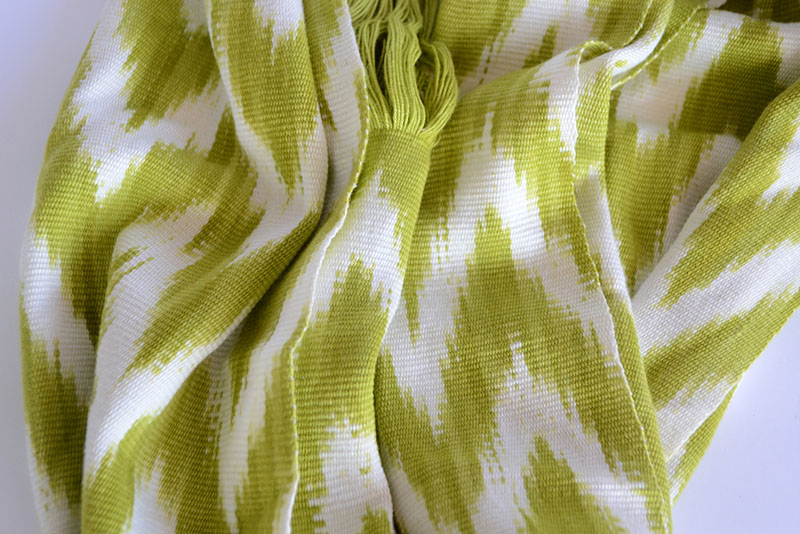Ikat (from Malay “Mengikat”): to tie up
Ikat is a millenary and complex technique used to elaborate colorful patterned scarfs and shawls.
The difference between Ikat and other resist-dyeing techniques such as tie-dye and batik, is that in Ikat the threads are dyed before weaving.
With the Ikat technique the threads must be dyed before weaving. Through the use of skillfully made special knots, the dyes do not penetrate certain sections of the textile, thus obtaining a variety of tones to form the desired pattern.
Creating an ikat scarf or shawl takes anywhere from three days to two months, depending on the pattern and the fringe. The entire process of making an Ikat textile is 100% handmade.
